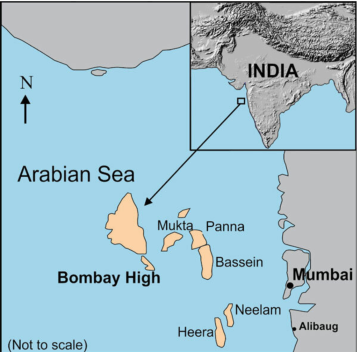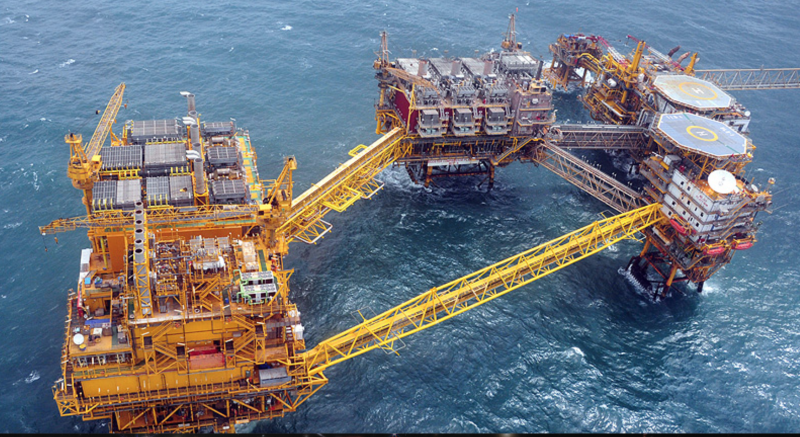India’s national oil company ONGC has launched an international tender seeking technical service partners (TSPs) to reverse declining output at its flagship Mumbai High field which accounts for 38% of India’s current oil production.
The tender which closes on 15 September offers a share of revenue from incremental production plus a fixed fee but no equity, according to ONGC, which is only considering bids from companies whose annual revenues exceed $75 billion, according to tender documents quoted by Indian media.

The selected TSPs will be contracted for an initial 10 years, with 5-year extensions possible. Tender winners will be required to review the field's performance and implement technological improvements to boost production while ONGC regains operational control and bears all risks and costs.
Located 160 km off the west coast of India in the Arabian Sea, the Mumbai High field currently produces about 134,000 B/D after having declined steadily from its 1989 peak of 471,000 B/D of oil and 28 Bcm of gas. Mumbai High began producing in 1976.
ONGC in Talks With ExxonMobil, Chevron, and Equinor
In February, ONGC announced plans to invest $3.5 billion to boost output from its western offshore assets over the next 3 to 4 years.
Pankaj Kumar, head of offshore assets at ONGC, told the India Energy Week conference in Bengaluru that the investments target deep water and that ONGC is talking with ExxonMobil, Chevron, and Equinor as possible partners, Reuters reported.
"We are open to any kind of partnership under the production-sharing contract, be it a participating interest or revenue sharing ... we are open to partnership," Kumar told the conference audience.
While Mumbai High is the most prolific of India’s western offshore fields, its production is supplemented by other nearby assets which together are currently delivering 41.5 million scm/D of gas production and about 260,000 B/D of oil, Kumar said.
ONGC believes that Mumbai High still has a balance reserve of 80 million tons (610 million bbl) of oil and more than 40 Bcm of gas that can be tapped with the right technologies.
For example, low-salinity waterflooding has been applied successfully to enhance production at Mumbai High as detailed in OTC 32413 by ONGC. In SPE 216840 the Indian major presented a case study at ADIPEC focused on the exploration of basement reservoirs that can also add to production.
India’s East Coast Gains Traction in Bay of Bengal
As for India’s East coast, ONGC produced first oil in January from its flagship deepwater KG-DWN-98/2 block in the Bay of Bengal’s Krishna Godavari basin, a project that aims to raise the country’s domestic oil production by 11% and gas production by 15%.
Also in the Bay of Bengal, India’s Reliance Industries Ltd. (RIL) and BP (33.33% participating interest) started producing in June 2023 from the MJ field which was the third and last of the major new deepwater developments in the KG D6 block.
As of early 2024, the three fields in the KG D6 block (R-Cluster, Satellite Cluster, and MJ) were producing around 30 million scm/D (1.0 Bcf/D), and RIL (66.67% operator interest) had obtained government permission to invest in further development to add another 4 to 5 million scm/D to that figure, according to India’s Business Standard.
By 2040 India is projected to account for 25% of the growth in world energy demand, more than any other country, the International Energy Agency’s Sustained Energy Policy Scenario outlined in its 2021 outlook.
The country currently imports 87.7% of crude oil consumed domestically with LNG imports satisfying about 46% of natural gas demand.
FOR FURTHER READING
OTC 32413 Experience of Low-Salinity Waterflooding in Mumbai High Field—First Offshore Field in India To Implement Enhanced Oil Recovery Technique by Siddhant Dwivedi, Dheeraj K. Awasthi, and Saurabh Pandey, et al., ONGC.
SPE 216841 Structural and Fracture Intensity Modeling, an Integrated Approach for Fracture Basement Characterization: A Case Study of Mumbai High Field, Western Offshore India by Varsha Suresh More, S.C. Malviya, Sanjoy Mukherjee, et. al., ONGC.
Wavelet Analysis of Geophysical Well-Log Data of Bombay Offshore Basin, India by E. Chandrasekhar and V. Eswara Rao, Indian Institute of Technology Bombay, Powai, Mumbai. Mathematical Geosciences.


